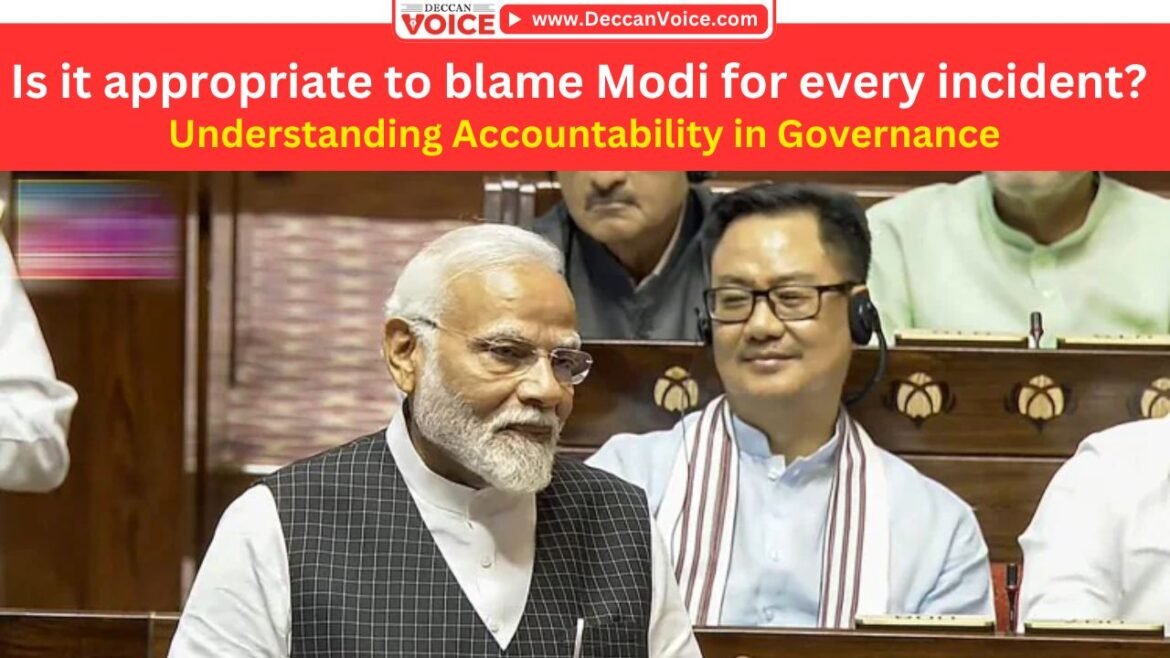Table of Contents
In the complex machinery of governance, accountability often becomes a hotly debated topic, especially in times of crisis or failure. Incidents like bridge collapses or paper leaks frequently trigger public outrage, and it’s not uncommon for Prime Minister Narendra Modi to become the focal point of blame. However, attributing these failures directly to him oversimplifies the issue and overlooks the intricate layers of responsibility within the political and administrative framework.
The Role of the Prime Minister
As the head of government, Prime Minister Modi holds ultimate responsibility for the country’s direction and major policy decisions. His leadership shapes the overall governance strategy, economic policies, and international relations. However, the implementation of policies and the management of specific projects are often delegated to various ministries, state governments, and local bodies.
Incidents of Bridge Collapse and Paper Leak
Bridge Collapses
Bridge collapses are tragic events that often result from a combination of factors including poor construction practices, lack of maintenance, corruption, and oversight failures. These issues typically stem from local and state-level administrative lapses. Engineers, contractors, and local officials are usually responsible for ensuring that infrastructure projects meet safety standards and are properly maintained. When these standards are not met, it reflects systemic issues at the local level, rather than directives from the central government source.
Paper Leaks
Paper leaks in competitive exams such as NEET or state board exams have far-reaching implications, undermining the education system’s credibility and affecting students’ futures. These leaks often occur due to lapses in security and integrity at the local administrative level. While the central government sets policies and frameworks, the actual administration of these exams is typically managed by state education departments and local boards. Corruption and lack of stringent security measures at these levels are the primary causes of such leaks source.
The Role of Lower-Level Politicians and Bureaucrats
The administrative machinery of India is vast and hierarchical. While the central government, led by the Prime Minister, sets overarching policies and provides funding, the execution and monitoring of these policies lie with state governments, local bodies, and various administrative departments. Lower-level politicians and bureaucrats play crucial roles in this structure:
- Local Governance: Municipalities and Panchayats are responsible for local infrastructure projects. Corruption and mismanagement at these levels often lead to substandard work and safety issues.
- State Governments: State-level politicians and officials oversee education boards, public works, and law enforcement. Their efficiency and integrity directly impact the success or failure of initiatives and the prevention of incidents like paper leaks.
- Bureaucratic Accountability: Bureaucrats are tasked with implementing policies and ensuring compliance with standards. Their accountability and efficiency are critical to the smooth functioning of governance.
The Need for Systemic Reform
While it is essential to hold leaders accountable, it is equally important to address systemic flaws that allow such failures to occur. Systemic reform involves:
- Strengthening Local Governance: Improving transparency and accountability at the local level can prevent corruption and mismanagement. This includes better training for officials and stricter enforcement of regulations.
- Enhanced Monitoring: Implementing robust monitoring mechanisms can ensure that policies are correctly executed. Technology can play a significant role in tracking projects and preventing malpractices.
- Judicial and Administrative Reforms: Streamlining judicial processes to swiftly address corruption cases and administrative reforms to enhance efficiency and accountability can create a more resilient governance framework.
- Public Awareness and Participation: Encouraging public participation in governance can increase transparency and accountability. When citizens are actively involved, it is harder for corrupt practices to go unnoticed.
Conclusion
Blaming Prime Minister Modi for every incident like bridge collapses or paper leaks simplifies complex governance issues and overlooks the roles and responsibilities of various levels of government. While leadership at the top is crucial, the execution of policies and projects involves a vast network of lower-level politicians and bureaucrats. Addressing these issues requires systemic reforms and a collective effort to enhance transparency, accountability, and efficiency at all levels of governance. Only through such comprehensive measures can we hope to prevent such incidents and build a more robust and reliable governance system.



